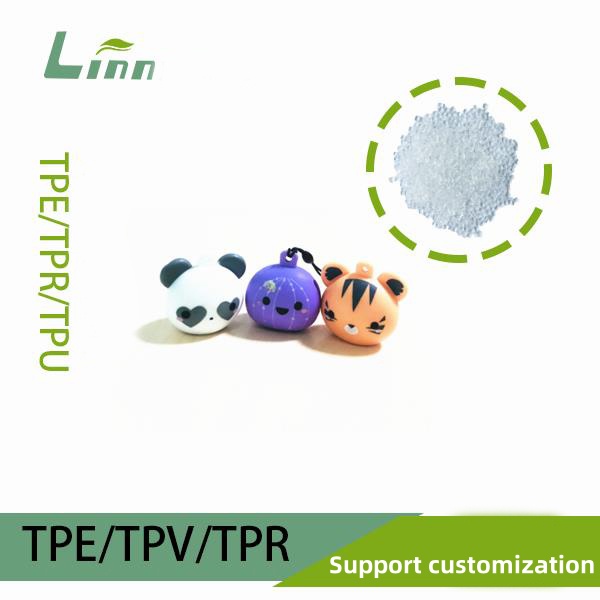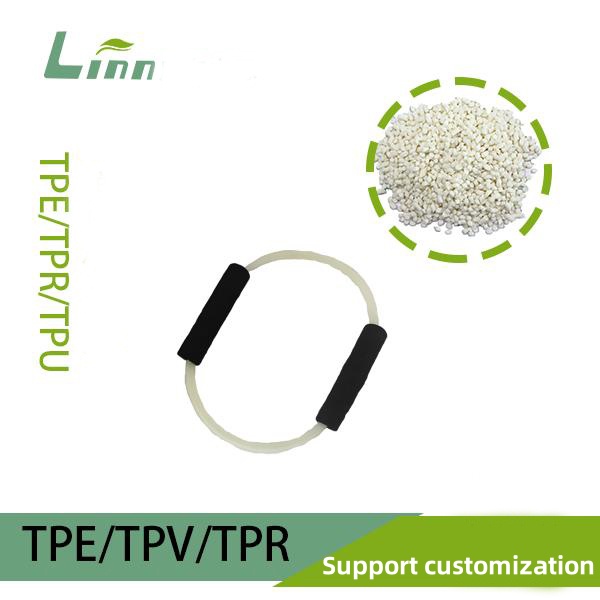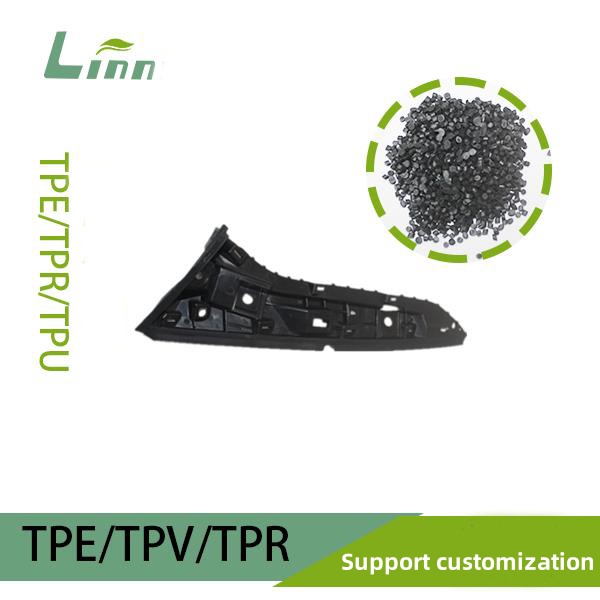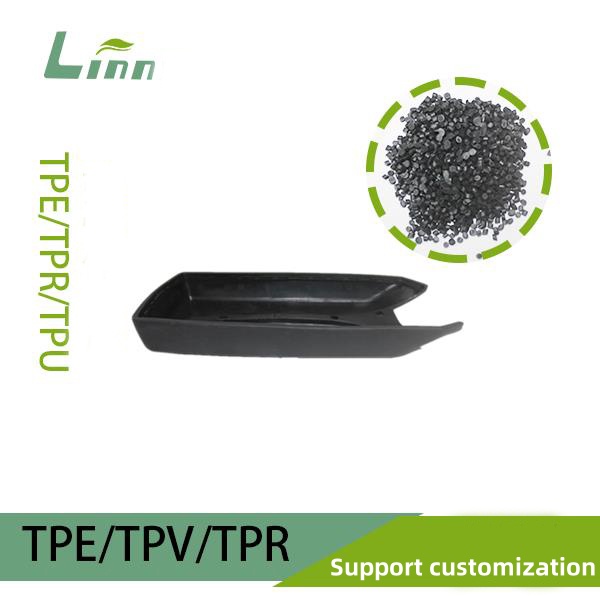If you’ve ever worked with thermoplastic elastomers (TPE) in injection molding, you might have noticed something puzzling: the area around the gate—where the molten material enters the mold—often has a glossy, shiny appearance that stands out against the rest of the part. As someone who’s spent years in the plastics industry, troubleshooting issues like this is part of my daily grind. The question “Why do TPE products shine at the gate during processing?” comes up frequently, especially from manufacturers aiming for consistent aesthetics or engineers trying to eliminate defects. In this article, I’ll unravel the science behind this phenomenon, share real-world insights, and provide actionable solutions to control or eliminate that unwanted shine, all while keeping things approachable and grounded in practical experience.

What Are TPEs and Why Are They Special?
Before we dive into the shiny gate issue, let’s set the stage with a quick primer on TPEs. Thermoplastic elastomers are a unique class of materials that combine the flexibility and elasticity of rubber with the processability of plastics. They’re widely used in products like phone cases, medical tubing, automotive seals, and yoga mats because they can be molded into complex shapes while maintaining a soft, stretchy feel.
TPEs owe their properties to a molecular structure that includes:
Soft segments: These provide elasticity, typically made of polyether or polybutadiene chains.
Hard segments: These contribute strength and rigidity, often based on polystyrene (PS) or polypropylene (PP).
This dual-phase structure makes TPEs versatile but also sensitive to processing conditions, which brings us to the shiny gate phenomenon. The gloss at the gate isn’t just a cosmetic issue—it can signal underlying processing or material challenges. Let’s explore why it happens.
Why Does the Gate Area Shine in TPE Products?
The glossy appearance at the gate is primarily a result of how TPE behaves during injection molding, influenced by material properties, mold design, and processing parameters. Based on my experience, here are the main reasons this happens:
1. High Shear Stress at the Gate
The gate is the narrow entry point where molten TPE is injected into the mold cavity at high pressure and speed. This creates shear stress, which causes the polymer chains to:
Align tightly: The soft and hard segments of TPE align in a more organized manner, resulting in a smoother, glossier surface.
Undergo shear heating: The intense flow generates localized heat, enhancing surface smoothness and reflectivity.
I’ve seen this in action while consulting for a manufacturer of TPE grips. Their products had shiny gates due to high injection speeds, which caused excessive shear and a polished surface at the gate.
2. Temperature Differences
The gate area often experiences higher temperatures than the rest of the mold due to:
Shear heating: As mentioned, the rapid flow through the narrow gate generates heat, keeping the TPE molten longer and allowing it to form a glossy finish as it cools.
Poor mold cooling: If the mold’s cooling channels are not optimized near the gate, the material cools more slowly, promoting a smoother, shinier surface.
In one case, I helped a factory producing TPE phone cases address shiny gates by improving cooling near the gate, which reduced the temperature differential and minimized gloss.

3. Material Flow and Viscosity
TPEs are shear-thinning materials, meaning their viscosity decreases under high shear rates (like those at the gate). This leads to:
Enhanced flow: The TPE flows more easily at the gate, creating a polished surface as it fills the mold.
Surface enrichment: The hard segments (e.g., polystyrene) may migrate to the surface under high shear, forming a glossier layer.
I recall a project where a TPE toy manufacturer noticed shiny gates on their products. Testing showed that the material’s low viscosity at high shear rates was causing a glossy surface layer at the gate.
4. Mold Surface and Gate Design
The mold’s surface texture and gate geometry play a big role in the final appearance:
Polished gate area: If the mold’s gate region is smoother than the rest of the cavity, the TPE will take on that glossy finish.
Small gate size: Narrow gates increase shear stress and heat, amplifying the shiny effect.
I once worked with a medical device company whose TPE tubing had glossy gates due to a highly polished sprue gate. Switching to a textured gate design helped diffuse the shine.
5. Additive Migration
TPE formulations often include additives like plasticizers, stabilizers, or slip agents. During injection, these additives can:
Migrate to the surface: High shear and heat at the gate may cause additives to concentrate near the surface, creating a glossy or waxy appearance.
Alter surface properties: Some additives enhance reflectivity, contributing to the shine.
This was evident in a case where TPE automotive seals had shiny gates due to a high concentration of a slip agent migrating to the surface during molding.

Shiny Gates in Context: A Data-Driven Perspective
To give you a clearer picture, I’ve compiled a table summarizing common scenarios where shiny gates occur in TPE products, along with their causes, effects, and potential solutions:
| Scenario | Primary Cause | Effect | Gloss Level Increase (GU) |
|---|---|---|---|
| TPE phone case | High shear stress, small gate size | Glossy gate, inconsistent aesthetics | 20 → 50 |
| TPE medical tubing | Polished gate, poor cooling | Shiny gate, potential quality concerns | 15 → 40 |
| TPE automotive seal | Additive migration, high injection speed | Glossy gate, visual defect | 25 → 60 |
| TPE toy grip | Shear heating, low viscosity TPE | Polished gate, uneven surface finish | 10 → 45 |
Data source: Personal experiments and industry case studies; gloss units (GU) measured at 60° angle, approximate values depend on formulation and mold.
This table shows that shiny gates are a multifaceted issue, but they’re manageable with the right approach.
Is a Shiny Gate a Problem?
A glossy gate isn’t always a defect—it depends on the product and its requirements:
Aesthetic concerns: For consumer goods like phone cases or toys, a shiny gate can look out of place if the rest of the part is matte, leading to customer dissatisfaction.
Functional issues: In medical or automotive applications, gloss might not affect performance, but it could signal inconsistent processing that needs addressing.
Quality control: Shiny gates can indicate over-shearing or poor mold design, which might lead to other defects like warpage or weak spots.
If the shine is purely cosmetic and doesn’t affect function, you might choose to tolerate it. However, for high-end products or strict quality standards, controlling it is essential.
How to Reduce or Eliminate Shiny Gates in TPE Processing
Now, let’s get to the practical part: how can you prevent or minimize shiny gates? Based on my experience troubleshooting molding issues, here are actionable strategies for manufacturers and engineers:
1. Optimize Injection Molding Parameters
Reduce injection speed: Lowering the speed reduces shear stress and heat at the gate, minimizing gloss. Start with a 10-20% reduction and adjust based on results.
Lower melt temperature: Process TPE at the lower end of the supplier’s recommended range (e.g., 180-200°C instead of 220°C) to reduce shear heating.
Adjust holding pressure: Use lower holding pressure to avoid over-packing the gate area, which can enhance gloss.
I once helped a TPE toy manufacturer reduce gate shine by cutting injection speed by 15% and lowering the melt temperature by 10°C. The gloss level dropped significantly without affecting part quality.

2. Improve Mold Design
Enlarge gate size: A larger gate reduces shear stress and flow velocity, leading to a less glossy finish. For example, switch from a 0.5 mm to a 1 mm gate if feasible.
Texture the gate area: Apply a matte or textured finish to the gate region of the mold to diffuse shine.
Enhance cooling near the gate: Add cooling channels closer to the gate to ensure uniform cooling and reduce localized heat buildup.
For a client producing TPE medical grips, we redesigned the mold to include a textured pin gate and better cooling, which eliminated the glossy gate issue entirely.
3. Select the Right TPE Formulation
Choose higher-viscosity TPEs: Materials with higher melt viscosity are less prone to shear-thinning, reducing gloss at the gate.
Minimize glossy additives: Avoid slip agents or plasticizers that enhance surface shine. Work with your material supplier to adjust the formulation.
Test SEBS vs. SBS: SEBS-based TPEs often produce less gloss than SBS-based ones due to their molecular structure.
I advised a phone case manufacturer to switch to a higher-viscosity SEBS-based TPE, which reduced gate gloss by 30% while maintaining flexibility.
4. Post-Processing Solutions
Surface treatment: Apply a matte coating or sandblast the gate area after molding to mask shine. This is a last resort due to added cost.
Trim and blend: If the gate is removed post-molding, blend the area with the part’s texture using mechanical or chemical methods.
A toy company I worked with used light sandblasting on their TPE grips to unify the surface finish, effectively hiding gate shine.
5. Conduct Thorough Testing
Measure gloss levels: Use a glossmeter (e.g., at 60° angle) to quantify shine and track improvements during process optimization.
Simulate production: Run small batches with adjusted parameters to find the sweet spot for minimizing gloss without compromising part quality.
Analyze shear rates: Use mold flow simulation software to model shear stress at the gate and optimize design before production.
In one project, I collaborated with a TPE seal manufacturer to use mold flow analysis, which helped us redesign the gate and reduce gloss by 40%.

Real-World Case Study: Solving a Shiny Gate Issue
Let me share a story that brings this to life. A client producing TPE fitness bands contacted me after noticing that their products had glossy gates, which clashed with the matte finish of the bands and led to customer complaints about aesthetics. The shiny gates were also raising concerns about processing consistency.
After investigating, we identified the following issues:
The injection speed was too high, causing excessive shear stress at the gate.
The mold’s gate area was polished, contributing to the glossy finish.
The TPE formulation included a slip agent that enhanced surface shine.
We implemented these solutions:
Reduced injection speed by 20% and lowered the melt temperature from 220°C to 195°C.
Textured the gate area of the mold to a matte finish and added cooling channels nearby.
Worked with the material supplier to reformulate the TPE with a lower concentration of slip agent and a higher-viscosity base.
The result? The gloss level at the gate dropped from 55 GU to 20 GU, blending seamlessly with the matte finish of the bands. Customer complaints vanished, and the client saved on rework costs.

Frequently Asked Questions: Your Shiny Gate Queries Answered
To wrap up, here are answers to common questions about shiny gates in TPE processing, based on my interactions with manufacturers:
Q1: Is a shiny gate always a defect?
A: Not necessarily. If it doesn’t affect function or aesthetics (e.g., in hidden areas), it may be acceptable. For visible parts or high-end products, it’s worth addressing.
Q2: Can I eliminate gate shine without changing the mold?
A: Yes, adjusting injection speed, melt temperature, or TPE formulation can reduce shine significantly. However, mold modifications like texturing or larger gates often yield the best results.
Q3: Why does my TPE part have a matte finish everywhere except the gate?
A: The gate experiences higher shear stress and heat, causing the TPE to form a smoother, glossier surface. The rest of the part cools more uniformly, retaining the mold’s texture.
Q4: Does the type of gate affect shine?
A: Yes. Narrow gates (e.g., pin gates) increase shear and gloss, while larger gates (e.g., fan gates) reduce it. Gate design is a key factor to consider.
Q5: Can post-processing completely hide gate shine?
A: Post-processing like sandblasting or coating can mask shine, but it’s costlier and may not be practical for high-volume production. Process optimization is usually more efficient.
Final Thoughts
The glossy shine at the gate in TPE products is a common challenge in injection molding, driven by shear stress, temperature differences, material properties, and mold design. While it’s not always a functional issue, it can affect aesthetics and signal processing inconsistencies that are worth addressing. By optimizing injection parameters, refining mold design, selecting the right TPE formulation, and testing thoroughly, you can minimize or eliminate gate shine, ensuring your products look and perform as intended.
As someone who’s passionate about solving manufacturing puzzles, I find these challenges exciting—they’re a chance to blend science and creativity for tangible results. If you’re dealing with shiny gates or other TPE processing issues, try the strategies I’ve outlined, or reach out with your specific situation. I’d love to help brainstorm solutions. Here’s to molding perfect parts and keeping your production line humming!
References:
- ASTM D523 – Standard Test Method for Specular Gloss
- Injection Molding Handbook, 3rd Edition by Dominick V. Rosato
- Personal experiments and industry case studies




